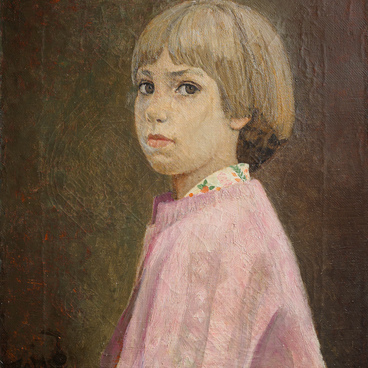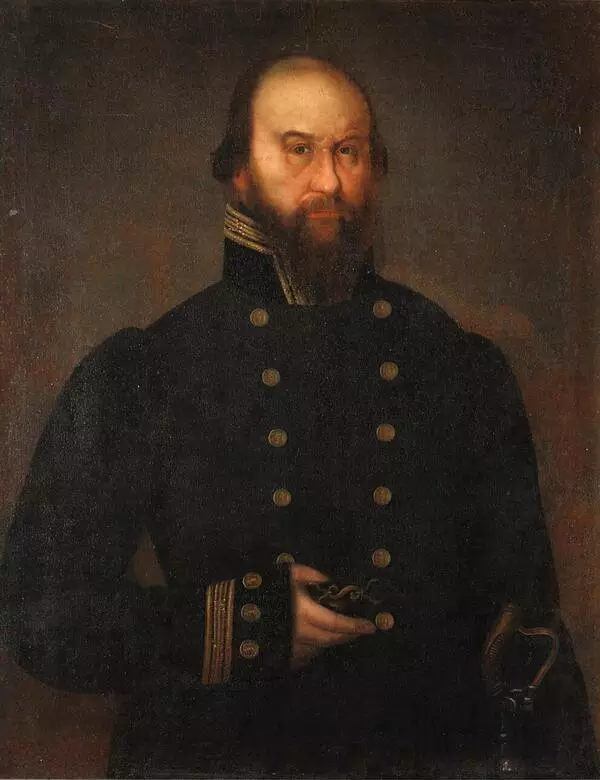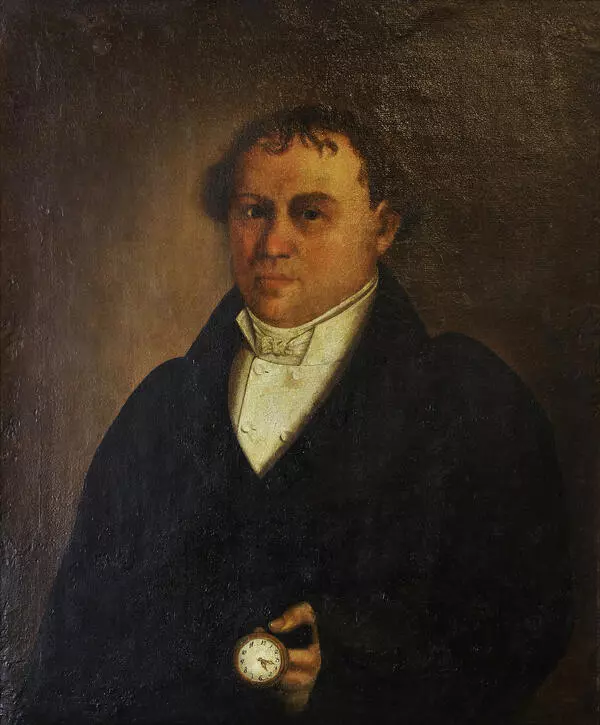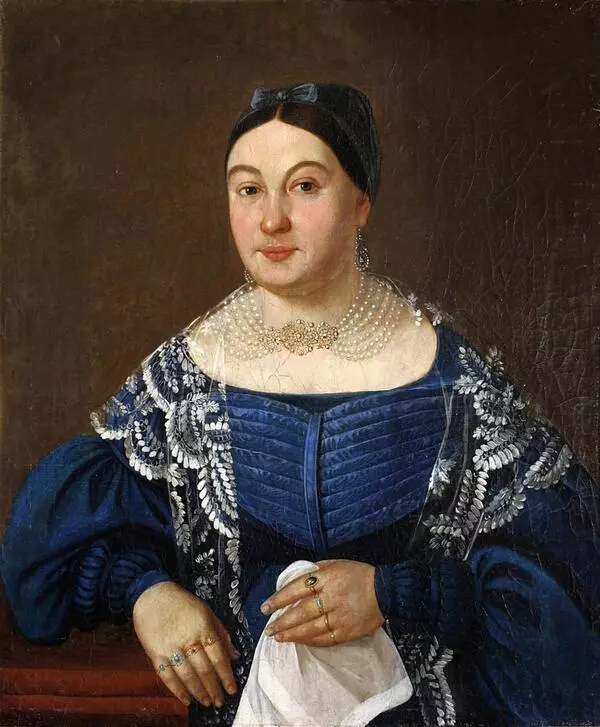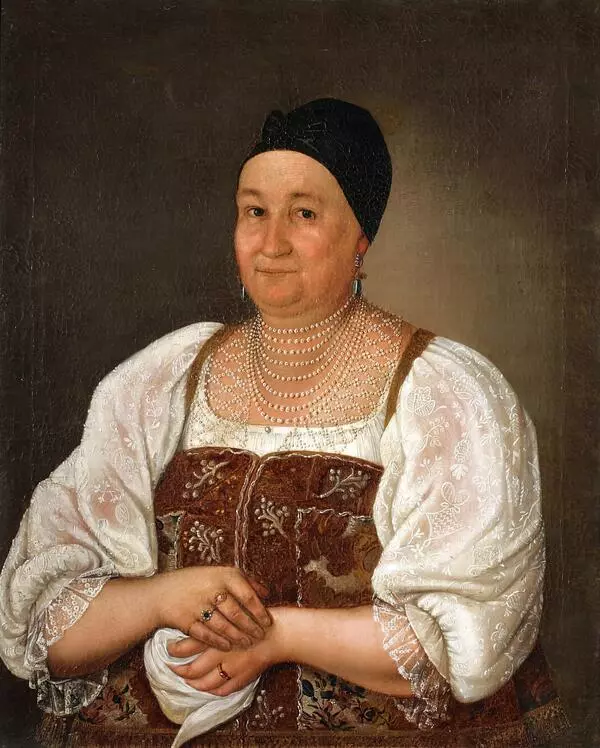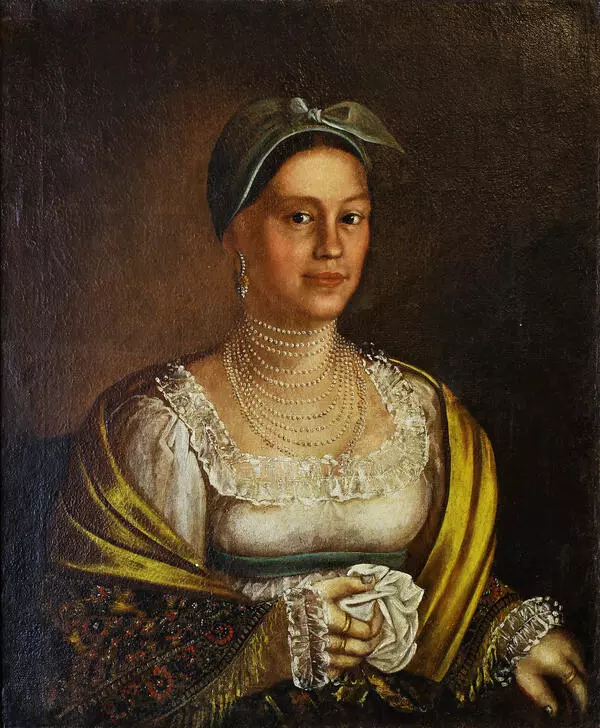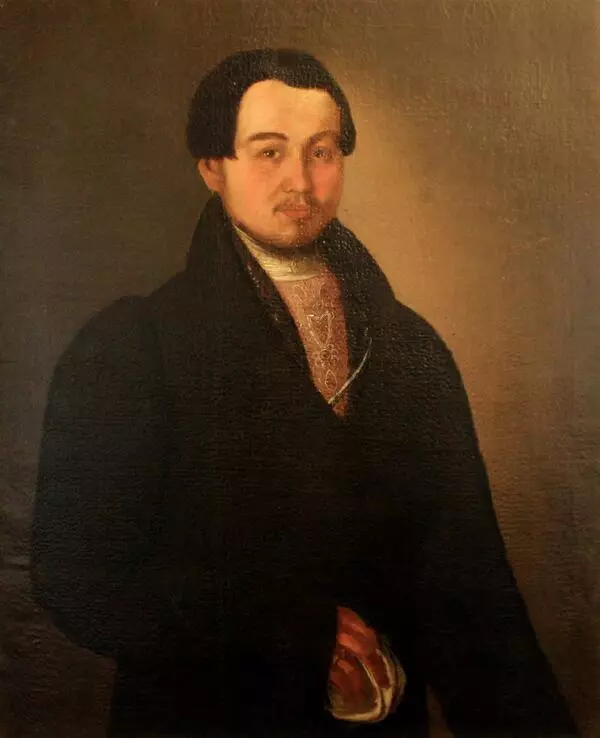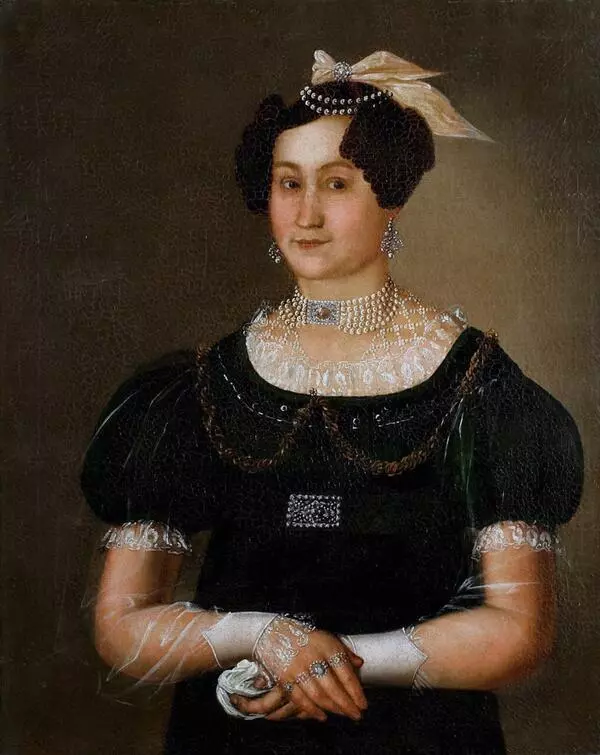The portraits of the Shaposhnikovs — Semyon and his wife Praskovya — entered the museum when merchant portraits painted by local artists were still not recognized as items worthy of art collections. They were collected rather as elements of provincial décor and included in exhibitions dedicated to the history and everyday life.
Semyon Grigoryevich Shaposhnikov was a typical representative of provincial society. According to the records on local merchants, after the death of their father, he and his brother Gavriil did not divide the family business but continued trading in “bread products” together and sold cow leather for dressing. For a long time, Shaposhnikov was not happy in family life: his first and second wives died very young, and in 1816, the twice-widowed man married for the third time. His third wife Praskovya Mikhailovna came from a large family of the Zimins. Her father was elected mayor and had three stone houses in Uglich.
In 1824, the growing Shaposhnikov family moved into a large new house on the bank of the Volga. The house was located in one of the most prestigious areas of the city, indicating the wealth and status of the merchant family. Five years later, in October 1829, the portraits of the couple were commissioned from the local artist Ivan Tarkhanov.
The paired portraits have a common composition: the figures are slightly turned toward each other; the same muted green color is used for his rough frock coat and her silk dress and headband. The sitters are depicted in dim even lighting that is just bright enough to make their figures stand out against the dark background. The brush strokes are smooth and barely noticeable, forming shapes and being visible only on the faces. The portraits represent the mature period in the work of the artist who managed not only to find the perfect composition for paired portraits but also to successfully combine the typical traits of the sitters with the ceremonial look of this image of “a blessed marriage”. The Shaposhnikovs appeared before the artist and the viewers in the way that they wanted to remain on the walls of their house and in the memory of their numerous descendants.
Semyon Grigoryevich Shaposhnikov was a typical representative of provincial society. According to the records on local merchants, after the death of their father, he and his brother Gavriil did not divide the family business but continued trading in “bread products” together and sold cow leather for dressing. For a long time, Shaposhnikov was not happy in family life: his first and second wives died very young, and in 1816, the twice-widowed man married for the third time. His third wife Praskovya Mikhailovna came from a large family of the Zimins. Her father was elected mayor and had three stone houses in Uglich.
In 1824, the growing Shaposhnikov family moved into a large new house on the bank of the Volga. The house was located in one of the most prestigious areas of the city, indicating the wealth and status of the merchant family. Five years later, in October 1829, the portraits of the couple were commissioned from the local artist Ivan Tarkhanov.
The paired portraits have a common composition: the figures are slightly turned toward each other; the same muted green color is used for his rough frock coat and her silk dress and headband. The sitters are depicted in dim even lighting that is just bright enough to make their figures stand out against the dark background. The brush strokes are smooth and barely noticeable, forming shapes and being visible only on the faces. The portraits represent the mature period in the work of the artist who managed not only to find the perfect composition for paired portraits but also to successfully combine the typical traits of the sitters with the ceremonial look of this image of “a blessed marriage”. The Shaposhnikovs appeared before the artist and the viewers in the way that they wanted to remain on the walls of their house and in the memory of their numerous descendants.

